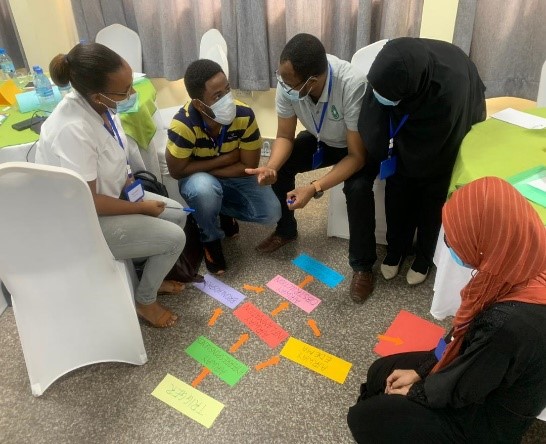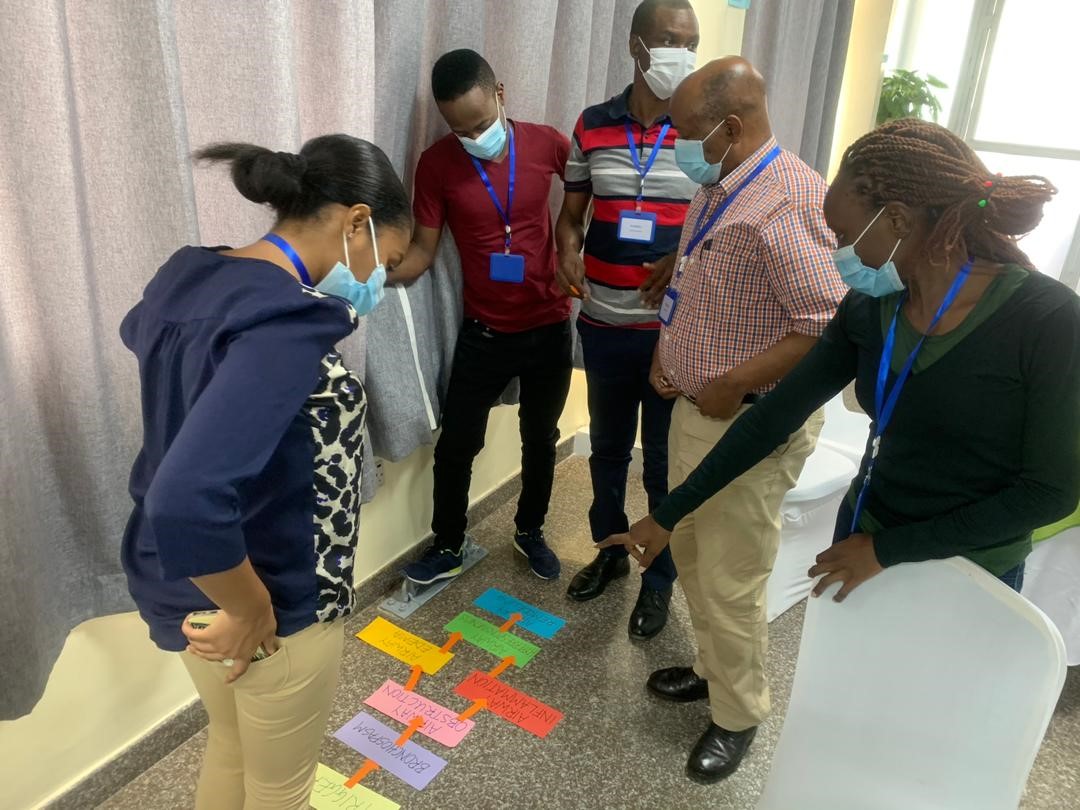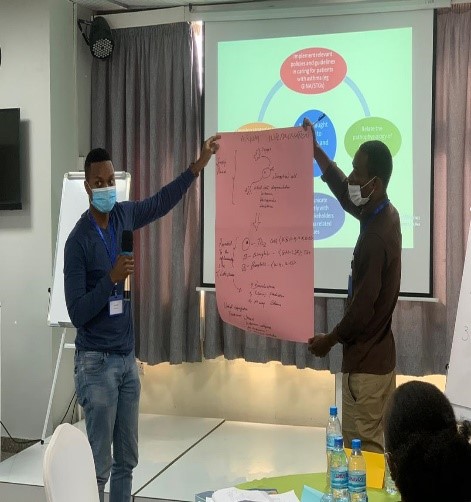My Workshop Learning into Practice
This story is written by Nahida Walli, Paediatrician, Aga Khan University, Dar es salaam, Tanzania.
My name is Nahida Walli and I am a consultant peadiatrician and a senior instructor at the Aga Khan University for the last 3 years. I would like to share my experience on how Teaching and Learning Enhancement (TLEW) has helped me in my field of work. Teaching has always been my passion but TLEW ignited that spark in me and has motivated me to improve on my teaching skills and learn more. The quote from Phill Collins:
“In learning, you will teach, and in teaching, you will learn” resonates well with my understanding of teaching, which means that the more you teach, the more you learn about teaching.
I begin my experience with TLEW, where I was engaged with teaching and assessment from a very different perspective. We were not only learning about new ways of teaching but were learning by doing. I have actually seen how strategies work because facilitators used new ways of teaching during the TLEW workshop. I was motivated to try a few of the strategies and experiment around that.
One particular experience that I would like to share is the ‘flipped classroom’ approach that I was introduced to during the workshop and thereafter tried with my learners. High school teachers named Jonathan Bergmann and Aaron Sams in 2012 pioneered the Flipped classroom concept. The flipped approach gives students an opportunity to learn the foundational information that is provided to them before coming to their classroom. The approach is more application-based, saves time, is convenient, and helps the learners to deeply reflect and avoid cramming.
I used this flipped learning approach when I facilitated on the topic “Pathophysiology of Asthma” whereby I provided students with materials to read beforehand (prior reading).
As a bridge-in to the session, I gave them a puzzle in groups to form their pattern on the topic (which is similar to a jigsaw technique).
The students were required to form the pathophysiology pattern from the pieces (pathophysiology steps) they had. Note: all groups had the same pieces. After each group had completed the task, I asked them to move around and see other groups ‘patterns. What they realized was, regardless of the same material they read and understood about pathophysiology, every group had its own pattern (See Picture A & Picture B) and understanding of the pathophysiology of Asthma, and yet they were all right. They also learned to appreciate different ways one thing can be understood with the same concept and essence.

Picture A

Picture B
As participatory learning, I assigned them to discuss one different step of the pathophysiology and summarized it on the manila sheet in any form they like. This was done in the same groups they were in. Each group then presented (See Picture C & Picture D) what they had and then the floor was open for questions and discussions.
Two students put it all together and summarized what they learned in that session (post-assessment and summary). Indeed, there was active participation and interaction among all the students. To the class, the students were tasked to continue reflecting on the summary provided.

Picture C: Students presentation
Picture D: Feedback from the student about the session
In conclusion, the prior reading gave the students an opportunity to explore more and obtain a deeper understanding of the topic. I believe this teaching approach encouraged students to be enthusiastic at all times. The students were free to share their opinion as it created a conducive environment. This teaching approach stimulated their thinking and encouraged them to refer to the extensive literature after the class for better understanding. As a teacher, I learned that students have different levels and forms of learning. Besides, it is good to experiment with different strategies based on the concept being taught. I plan to use this strategy again for different topics in the future.
A way forward
While reflecting on the experience on the TLEW workshop, I realized that it has given me an opportunity to engage with lesson planning, its components as well as reviewing or designing or redesigning a course with all its essential components such as learning outcomes, instructional strategies, and assessment.
This learning is long-term and will facilitate the future course designing and redesigning across all entities within AKU and beyond.
Overall, the workshop has upgraded my teaching and learning skills and I am grateful for being able to share my experience on this forum.


